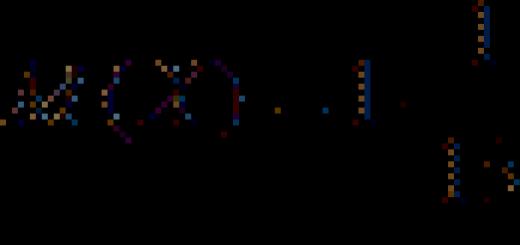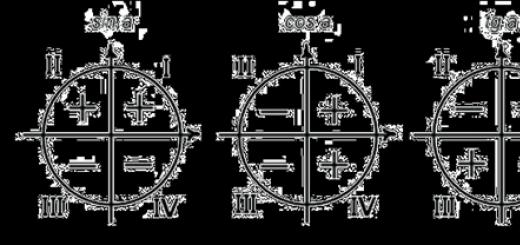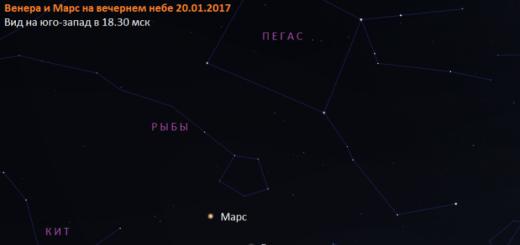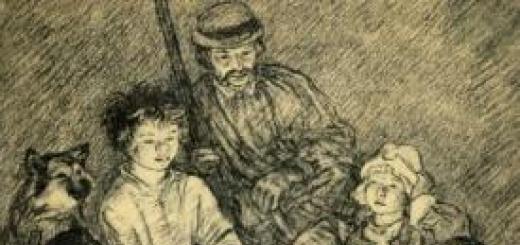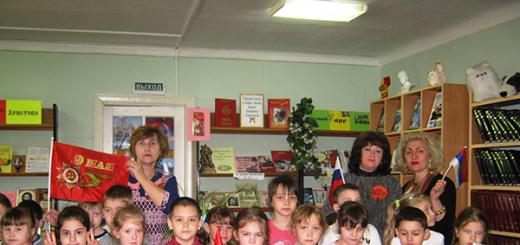The first tower project by V.G. Shukhov developed it in 1919. An ordinary willow basket prompted him to this idea. Due to metal shortages during the period civil war the height of the tower had to be reduced from 350 to 148.3 m.
Construction of the Shukhov Tower began on March 14, 1920. Work was interrupted many times due to lack of materials, but since the project was personally supervised by Lenin, construction was quickly resumed. After an accident while lifting the fourth section of the tower, Shukhov was sentenced to suspended execution with a suspended sentence until the completion of the work. At the beginning of March 1922, the installation of load-bearing structures was completed, and on March 19, the first broadcast of radio programs from the Shabolovskaya TV tower took place.
Regular television broadcasts through the transmitters of the Shukhov Tower began on March 10, 1939, when the television center on Shabolovka broadcast documentary on the opening of the XVIII Congress of the CPSU (b). Then the programs were broadcast 4 times a week for 2 hours. And for many years the image of the Shabolovskaya Tower was a symbol of Soviet television and the screensaver of many television programs, including “Blue Light”.
The Shabolovskaya TV tower has an original mesh design - this reduces the wind load to a minimum.
The round conical body of the tower consists of six sections, each 25 m high. The lower section is installed on a concrete foundation with a diameter of 40 m and a depth of 3 m. The tower elements are fastened with rivets. It is curious that the Shabolovskaya TV tower was built without scaffolding and cranes. The upper sections were assembled in turn inside the lower ones and lifted on top of each other.
The openwork steel structure combines strength and lightness: per unit height of the Shukhov Tower is consumed 3 times less metal than the Eiffel Tower in Paris. Also, the design of the Shukhov Tower with a height of 350 m had an estimated weight of 2,200 tons, and the Eiffel Tower with a height of 300 m weighs about 7,300 tons.
The construction of the beautiful and largest tower in Russia at that time caused general delight. And the hyperboloid sections going up in height inspired A.N. Tolstoy for the creation of the science fiction novel “The Hyperboloid of Engineer Garin.”
In 1941, the Shabolovskaya Tower underwent a serious test: a mail plane from Kyiv touched the cable remaining after construction, which was stretched from the top of the tower to the ground.
The plane fell into pieces, and the Shabolovskaya tower received a strong blow. The examination showed that the tower passed the test: it did not even require repairs.
Now the Shukhov Tower is recognized as a monument of architecture and engineering. But it has never been restored. Attempts to give the tower additional strength using welded elements are considered barbaric. However, the TV tower is in need of repair: it suffers from corrosion, and its movable base is concreted.
It was proposed to dismantle the tower and reassemble it, but this would lead to the loss of the monument. Now it has been strengthened and preserved. The passage to the Shabolovskaya Tower is closed. Perhaps in the future it will be restored, and the Shukhov Center for Science, Culture and Art will appear at the foot.
Shabolovskaya TV tower in photographs from different years:
Many, I think, have read the wonderful work of Alexei Nikolaevich Tolstoy “Hyperboloid of Engineer Garin” - I suggest you familiarize yourself with what served as inspiration for the classic :) In this article you will find the most comprehensive information about the Shukhov Towers
To date, only two hyperboloid designs by engineer Shukhov have survived in Russia - on the Oka River and in Moscow on Shabolovka

Shukhov Tower on the Oka River
There are no analogues to this 128-meter power line support anywhere else in the world - it is made in the form of a load-bearing mesh shell

The construction of the Shukhov Tower on the Oka Balo was completed seven years after the completion of the construction of another tower in Moscow, as a result of which this second design by engineer Shukhov was recognized by Western experts as more advanced and worthy of inclusion in the World Heritage List

Construction began in 1927 - in two years, three pairs of multi-sectional steel hyperboloid support towers with a height of 128, 68 and 20 meters were erected on the left bank of the Oka River near Nizhny Novgorod

Shukhov built his first tower in 1896 at the All-Russian Art Exhibition in Nizhny Novgorod, from that moment on, more than 200 towers were created based on his projects in Russia and abroad, including the famous Shabolovskaya radio tower in Moscow. The hyperboloid design invented by Shukhov also found a response in Japan, Switzerland and Spain, where their own Shukhov towers were erected according to his patent

Four small Shukhov towers on the Oka were dismantled as unnecessary after the power line route was changed, and the remaining two hyperboloid structures were given the status cultural heritage, which, unfortunately, did not save one of them from illegal dismantling for scrap in 2005, which was even written about in German newspapers

The only remaining Shukhov Tower on the Oka River consists of five 25-meter sections, shaped like single-cavity hyperboloids of rotation, consisting of straight beams, the ends of which rest on ring bases. The upper section is crowned by a support structure with a horizontal steel crossbar 18 meters long for attaching three high-voltage wires, and the tower itself is installed on a circular concrete foundation with a diameter of 30 meters

In the spring of 2005, 16 of the 46 steel beams of the basement section were stolen, and for three years the structure held tens of tons of power line wire, essentially missing a third of the base, until it was restored to its original appearance during reconstruction in 2008. The tower survived even though its base was completely flooded during a flood and withstood a multi-ton pressure of water and ice for a week

In May 2009, the bank of the Oka River, on which the Shukhov Tower stands, was fortified, a fence was built around it, and by the end of the year a security building was built nearby and a promenade embankment was laid


In 2010, it is planned to treat the tower with an anti-corrosion compound, install special lighting for aviation on it, improve the area and restore the road

Shabolovskaya Tower
The construction of the Shabolovskaya Shukhov Tower took place from 1919 to 1922 and upon completion it earned international recognition as one of the most beautiful and outstanding achievements of engineering in the world, but later lost these laurels to the tower on the Oka

Few people know that an acute shortage of metal in the war-ravaged country prevented the Shabolovsky radio mast from eclipsing the Eiffel Tower itself, because the original project envisaged the construction of a 350-meter hyperbolic structure that would be 45 meters higher than the French giant, but at the same time three times lighter than it! However, there was only enough metal to build a 148.3-meter radio station, from which radio broadcasting began on March 19, 1922

However, even the construction of such a version of the tower, more than half the size, caused general delight, and the image of the design of the Shukhov Tower inspired A. N. Tolstoy to write the science fiction novel “Engineer Garin’s Hyperboloid”

The Shukhov TV tower “grew up” a little after the installation of two traverses and a flagpole - its top was at a level of 160 meters

On March 10, 1939, regular television broadcasts began from the Shukhov Tower 4 times a week for 2 hours, and the image of the tower for a long time served as the emblem of Soviet television and the screensaver of many television programs, including “Blue Light”

Thanks to the mesh structure, the Shukhov Tower is exposed to minimal wind load, which is one of the main threats to high-rise buildings

The tower consists of six 25-meter sections and is installed on a circular concrete foundation with a diameter of 40 meters. All parts of the structure are held on by rivets, which leaves room for their movement - the figure of the television tower is non-static, which allows it to withstand serious loads

The design principle of Shukhov's hyperboloid towers was subsequently used in many water towers, power line supports and even in the masts of warships

The first country to use Shukhov's invention was Japan, which built a bright 108-meter television tower in the port of Kobe in 1963

Following Japan, the Czech Republic built the 100-meter-high Shukhov Tower in 1968. In 2003, another hyperboloid structure rose in Zurich, and subsequently it was decided to use the ideas of engineer Shukhov to design the Moscow City skyscrapers.

The crowning achievement of Shukhov's idea was a 610-meter hyperboloid structure in China, construction of which lasted from 2005 to 2009

Invention Soviet engineer is still regarded as a significant contribution to the history of architecture; models of his tower are exhibited at prestigious architectural exhibitions in Europe recent years, and her image was even used as the logo of the Paris Pompidou Center. In 2003, at the exhibition “The Best Designs and Structures in the Architecture of the 20th Century” in Munich, a gilded six-meter model of the Shukhov Tower was installed


If the Shukhov Tower on the Oka has already been almost completely restored and ennobled, then the restoration of the Moscow analogue is only planned

160 specialists from 30 countries of the world who took part in the international scientific conference"Heritage at Risk. Preservation of 20th-century architecture and World Heritage" recognized the Shukhov Tower as one of the seven most significant architectural masterpieces of the Russian avant-garde

Due to an incorrect approach to the restoration of a unique structure, when some of the elements were welded and bolted together, its basic principle was violated and it lost part of its mobility and self-compensation

The movable base of the Shabolovskaya TV tower was concreted, which also affected the kinematic diagram of the structure. Today the tower is fenced barbed wire and tourists do not have the opportunity to get closer to it

Today there is talk not only about restoration work, but also about the creation of a recreational and tourist infrastructure at the foot of the tower, including the Shukhov Center for Science, Culture and Art.

On March 13, 2009, the start of restoration work on the Shukhov TV Tower on Shabolovka was announced

A monument to Vladimir Grigorievich Shukhov was erected on Sretensky Boulevard in Moscow for his invaluable contribution to the history of Russian architecture.

Shukhov Tower
Also known as the Shabolovskaya radio tower, it was created in 1920-1922 by a talented Russian engineer, architect, scientist, academician Vladimir Grigorievich Shukhov.
Description of the Shukhov Tower
It is a unique hyperboloid structure made in the form of a load-bearing mesh steel shell. This Moscow tower is considered one of the most beautiful and outstanding creations engineering genius all over the world. In the book “One Hundred Masterpieces of the Soviet Architectural Avant-Garde,” the Shabolovskaya Tower ranks second among 100 other architectural masterpieces of Russia of the 20th century. became the first television tower in the USSR and Russia, and now its main function is broadcasting radio programs. The height of the tower is 148.3 meters.

Shukhov Tower

History of the Shukhov Tower
The decision to build a new radio tower was made by the Bolshevik government in 1919, when it became clear that the Khodynka radio station, built in 1914, could not cope with the constantly increasing flow of radiograms coming from Moscow. Initially, three antenna masts with wooden trunks 150 m high were installed around the radio station, which were supported by multi-tiered inclined steel guys. But after some time, one of the masts was hit by a mail plane and it collapsed. Instead, it was decided to build a new antenna tower without guy wires.

Shukhov Tower

According to the first project, which V.G. Shukhov developed it in 1919, the height of the tower was 350 meters. But the civil war was just going on, and due to a lack of metal, they began to build the tower not from 9, but from 6 sections. But even despite this, construction was often interrupted due to a shortage of materials. During the lifting of the quadruple section of the tower, an accident occurred, and V.G. Shukhov was sentenced to suspended execution with a suspended sentence until the construction of the tower was completed.
In early March 1922, the installation of the Shukhov Tower was completed, and on March 19, the first radio broadcasts began from here. With V.G. Shukhov was acquitted of sabotage charges and the suspended execution was cancelled.
In those years it was the tallest in Russia, and thanks to its unusual design it was also very beautiful, which we can see today. It was the Shukhov Tower, composed of hyperboloid sections, that gave the writer A.N. Tolstoy's idea for his science fiction novel "Engineer Garin's Hyperboloid". After installing the flagpole, the height of the tower became 160 meters. The height of the Shukhov Tower above sea level is 131 meters.
Since March 19, 1922, it has been a support for antennas of various television and radio stations, such as: Moscow radiotelegraph station, 40-kilowatt radio broadcasting station “Bolshoi Comintern”, Moscow Television Center.

It was here that electronic television took its first steps in the USSR.
When the decision was made to create the Moscow Television Center in 1936, a transmitting television antenna was installed on the Shukhov Tower. The first experimental television broadcasts went on air at the end of 1937, and from March 1939, regular television broadcasts began from here, which took place four times a week for two hours. The first broadcast took place on March 10, it was a documentary about the opening of the XVIII Congress of the CPSU (b). For a long time, the image of the Shukhov Tower served as the emblem of Soviet television and was the screensaver of various television programs, including the legendary “Blue Light”.

The originality of the architectural and engineering solution of the Shukhov Tower lies in the fact that it is a slender mesh structure, which will allow achieving minimal wind load, which is the main threat to such tall buildings. The tower sections are single-sheet hyperboloids of revolution, made of straight beams whose ends rest against ring bases. The openwork steel structure combines strength and lightness. This is evidenced by the fact that three times less metal was used per unit height of the Shukhov Tower than per unit height Eiffel Tower in Paris. According to the first design of the Shukhov Tower, at a height of 350 meters, it was supposed to weigh only 2,200 tons, and the Eiffel Tower, at a height of 300 meters, weighs 7,300 tons.
The round cone-shaped body of the tower consists of six sections. The height of each section is 25 meters. The lowest section rests on a concrete foundation 40 meters in diameter and 3 meters deep. All structural elements are fastened with rivets. The method of assembling the structure was also unusual. The tower was built using the telescopic method, without cranes or scaffolding. The upper sections were assembled inside the lower ones, and then, using a system of blocks and winches, they were installed on top of each other.

The principle of construction of the Shukhov Tower
The tower on Shabolovka is not the first built by Shukhov according to the hyperbolic principle. Invention by V.G. Shukhov patented (patent Russian Empire No. 1896 dated March 12, 1899, declared January 11, 1896), and is in demand throughout the world today. In 1963, the 108-meter hyperboloid Shukhov tower was built in the Japanese port city of Kobe, and in 2003 in Zurich - and this is only a small part of the examples of the use of Shukhov’s unique development. When constructing skyscrapers in the Moscow City business center, architect Mikhail Posokhin proposed using the principle of hyperboloid structures of Shukhov towers. Hyperbolic-shaped structures were used in their work by such world-famous architects as Antonio Gaudi, Le Corbusier, Oscar Niemeyer, Frei Otto, Norman Foster, Frank Gehry, Santiago Calatrava. Perhaps the most ambitious mesh Shukhov tower was built by ARUP in 2005-2009 in Guangzhou in China - its height was 610 meters. Architecture students and engineers know this tower as a classic example of a combination of rigidity and lightness of structures.

Shukhov Tower is included in the UNESCO heritage list
The decision of international experts is one of the highest achievements in the field of engineering. It has been declared a monument of architecture and engineering, protected by the state and, along with seven other sites located on the territory of Russia, recommended for inclusion in the UNESCO World Heritage List.

Work to strengthen the structures of the Shukhov Tower
Surprisingly, in almost 90 years of existence it has never been restored. In 1971, they tried to give it additional strength using welded elements that were bolted to the supporting riveted mesh. International experts called this method barbaric in relation to an architectural masterpiece. Initially, the base of the tower was movable, but during the strengthening it was concreted, thereby violating the Shukhov kinematic principle of construction. In addition, concreting the support units caused accelerated corrosion of the metal at the base of the tower. The essence of this principle was the presence of a certain amount of mobility and self-compensation to external loads.
Based on the results of the survey, in 1971 work was carried out to strengthen the tower structures, including concreting the support units. As it turned out later, the concreting carried out eliminated the possibility of adjusting the support system and increased corrosion of the metal at the base of the supports.
In addition, the tower is not protected from corrosion and is in disrepair. The strength of the tower's structure can be judged from history. In 1939, a single-engine plane flying at low altitude caught on a cable running from the top of the tower to the ground. As a result, the plane broke into pieces and crashed in the courtyard of a nearby residential building, killing both pilots. Despite the fact that the tower received a strong blow, it not only survived, but after an examination it turned out that it did not even need repairs.

In 2003 it was adopted
Resolution of the State Duma of the Russian Federation No. 4415-III on the legacy of V. G. Shukhov
Which, in particular, says: “It is especially important to preserve engineering structures built according to V. G. Shukhov’s designs in Moscow and other cities of Russia, and to take the necessary measures for this.” However, this decision remained only on paper. In 2003, the Shukhov structures of the landing stage of the Kievsky railway station were dismantled, the need for repair of which was discussed back in the mid-90s of the last century. In 2005, the 128-meter Shukhov Tower on the Oka River was dismantled for scrap metal - one of the two remaining unique hyperboloid supports of the NiGRES power line near Nizhny Novgorod, and in 2006, to clear space for the construction of an elite residential complex, a tram depot built according to project B was dismantled . G. Shukhov on the street. Shabolovka.

Location of the Shukhov Tower
The tower is located in a closed area; tourists are not able to approach the tower. In recent years, the question of restoring the tower to its original form has often been raised, and it is proposed to create a recreational and tourist infrastructure at its foot, including the Shukhov Center for Science, Culture and Art.
On March 13, 2009, Russian Prime Minister Vladimir Putin approved the initiative of the head of the Ministry of Communications and mass communications Igor Shchegolev about the start of restoration work on the Shukhov TV tower on Shabolovka, but so far the state of the architectural monument continues to be disrepair. If unfavorable circumstances occur, the tower may simply collapse.








The restoration of the famous Shukhov Tower on Shabolovka should begin soon, no matter how restoration has not been carried out since its construction, and on March 19, 2014 it turned 92 years old. While it is not known exactly where the restoration will be carried out, it is proposed to restore it on site or disassemble and reassemble it in a new place, it will be the All-Russian Exhibition Center or the city of Samara. Personally, I think that the tower should remain in its place; after all, it is one of the main symbols of Moscow, because no one will move the Moscow Kremlin or the Ostankino TV tower to another place for the sake of restoration...
The Shukhov Tower is a unique hyperboloid structure; only 8 of them out of more than 200 have survived throughout Russia: on Shabolovka, in the city of Petushki, in Dzerzhinsk ( Nizhny Novgorod region), in Krasnodar, the village of Polibino (Lipetsk region), etc. Of these, only two high-rise multi-section hyperboloid structures have survived: on Shabolovka and Dzerzhinsk. 








The first project of the tower on Shabolovka was developed by V. G. Shukhov in 1919 with an estimated height of 350 meters. But due to metal shortages during the Civil War, the design development was implemented according to the second project in the form of a structure with a height of 148.3 meters. On March 14, 1920, construction began on the radio tower on Shabolovka. Work on the construction of the structure was repeatedly interrupted due to lack of materials. An accident occurred while lifting the fourth section. From the diary of V. G. Shukhov: “June 29, 1921. When lifting the fourth section, the third broke. The fourth fell and damaged the second and first at seven o’clock in the evening.” At the beginning of March 1922, the installation of supporting structures was completed. On March 19, 1922, radio broadcasts began from the unique antenna tower. The construction of the largest tower in Russia at that time caused general delight. With the installation of two traverses and a flagpole, the height of the Radio Tower reached 160 meters. The height of the base above sea level is 131 meters.
Regular television broadcasts (four times a week) from the Shukhov Radio Tower began on March 10, 1939. On this day, the Moscow television center on Shabolovka broadcast a documentary film about the opening of the 18th Congress of the CPSU. Subsequently, the programs were broadcast 4 times a week for 2 hours. In the spring of 1939, more than 100 TK-1 televisions received broadcasts in Moscow. For many years, the image of the Shukhov Radio Tower was the emblem of Soviet television and the screensaver of many television programs, including the famous “Blue Light”. In the 1960s, the Shukhov Radio Tower was used as a movie screensaver, which was shown before the start of television programs. The musical theme of the movie screensaver is the song “Soviet Moscow”, with music by A. Titov and poetry by S. Vasiliev.
The Shukhov Radio Tower has an elegant mesh design, which ensures minimal wind load, which is the main danger for tall structures. The shape of the tower sections is single-sheet hyperboloids of revolution, made of straight beams resting their ends on ring bases. The openwork steel structure combines strength and lightness: three times less metal was used per unit height of the Shukhov Radio Tower than per unit height of the Eiffel Tower in Paris. The Shukhov Radio Tower project, with a height of 350 meters, had an estimated weight of only 2,200 tons, and the Eiffel Tower, with a height of 324 meters, weighs more than 10,000 tons.
The round conical body of the tower consists of 6 sections, each 25 meters high. The lower section is installed on a concrete foundation with a diameter of 40 meters and a depth of 3 meters. The tower elements are fastened with rivets. The construction of the tower was carried out without scaffolding or cranes. The upper sections were assembled in turn inside the lower ones and were lifted onto each other using blocks and winches. Over its long history, the Shukhov Radio Tower served as a support for antennas of large radio and television stations.
In 1941, the tower was subjected to a severe test: a mail plane from Kyiv, as a result of a malfunction, touched a thick cable that was stretched at an angle from the top of the tower to the ground. There it was wound onto a winch mounted on a concrete base. The cable remained after the construction of the tower, hung for several years, did not bother anyone and no one used it. The plane's wing touched the cable, the winch was torn out of the ground, the tower received a strong blow, and the plane, having received serious damage, fell in the courtyard of a residential building nearby. The examination showed that the tower withstood the blow with dignity and did not even need repairs.
Shukhov invented a method for constructing mesh hyperboloid towers. The world's first hyperboloid tower was built by Shukhov at the All-Russian Art and Industrial Exhibition in Nizhny Novgorod in 1896. V. G. Shukhov used the principle of constructing hyperboloid towers in hundreds of structures: water towers, power line supports, masts of warships.
Hyperboloid towers are still in demand today. In 1963, in the port of Kobe in Japan, the 108-meter hyperboloid Shukhov tower Kobe Port Tower was built according to the company’s design. In 1968, a hyperboloid tower 100 meters high was built in the Czech Republic according to the design of architect Karel Hubacek. In 2003, the hyperboloid tower was built in Zurich. The authors of the tower are architects Daniel Roth and Alexander Kohm Daniel Roth, Alexander Kohm. The famous architect Mikhail Posokhin proposed using Shukhov’s ideas of hyperboloid structures when designing new skyscrapers in the Moscow City business center. The 600-meter hyperboloid mesh Shukhov tower was built in Guangzhou in China by ARUP in 2005-2009. It was planned to be 610 meters high, but the height was reduced due to the nearby airport.
The global significance of the Shukhov Radio Tower is confirmed by the exhibition of its models at prestigious architectural exhibitions in Europe in recent years. At the exhibition "Engineering Art" at the Pompidou Center in Paris, the image of the Shukhov Radio Tower was used as a logo. The exhibition catalog contains a multi-page description of the Shukhov Radio Tower. At the exhibition “The best designs and structures in the architecture of the 20th century” in Munich in 2003, a gilded six-meter model of the Shukhov Radio Tower was installed. The designs of Vladimir Grigorievich Shukhov are described in detail in many European books on the history of architecture.
Now the Shukhov Radio Tower is recognized by international experts as one of the highest achievements of engineering art. At the international scientific conference “Heritage at Risk. Preservation of 20th Century Architecture and World Heritage,” held in April 2006 in Moscow with the participation of more than 160 specialists from 30 countries, in its declaration named the Shukhov Radio Tower among seven architectural masterpieces of the Russian avant-garde recommended for inclusion in the UNESCO World Heritage List.
The Shabolovskaya TV tower (Shukhov radio tower) was built in 1919–1922. according to the design of engineer V. G. Shukhov (1853–1939). The height of the tower is 150 m, weight - 220 tons. The tower was built “to ensure reliable and constant communication between the center of the republic and Western states and outskirts." At the top of the tower two traverses (cross members) and a flagpole were mounted. The actual radiating elements were attached to the traverses - cables leading to radio transmitters.
In 1936, during the creation of the first television center, a new transmitting turnstile antenna was installed at the top of the tower. To connect the television feeder to the antenna along the entire height of the structure, a metal truss was additionally installed, and at elevations of 141.7 m, 144.3 m and 148.4 m of the tower, three horizontal technical platforms were built for the installation of technological equipment.
In 1937, the country's first regular experimental television broadcasts began from the Shabolovskaya Tower. In 1938, the Moscow Television Center was organized here.
After the opening of the television center in Ostankino in November 1967, broadcasting from Shabolovka continued for another 2 months.
During the construction of the tower, a tragedy occurred that forever changed the life of its creator. The fourth section and part of the third collapsed. Two workers died in this case. The architect was given a suspended sentence of execution - this was a completely exceptional measure. The sentence was never carried out - at first it was postponed until construction was completed, then it was forgotten. But Shukhov had to live his whole life under his yoke.
Only three times, in 1949, 1950 and 1964. Anti-corrosion painting of the tower elements was carried out. In 1973, the tower was strengthened using welded elements bolted at the corners to a riveted supporting structure; the moving elements at the base were tightly concreted. All this violated the Shukhov kinematic design scheme, which is self-compensating with respect to external loads.
In 1991, the tower was converted for the then new FM broadcasting - a heavy antenna unit was mounted on top. Broadcasting was stopped in 2002.
In September 2015, in order to unload the tower, the antenna unit was dismantled. It is planned to return to the 1922 version - the traverse. A hexagonal pyramid of tubular structures was mounted inside the tower and the tower structures were hung on it through special units.
Over the past decades, the tower has not been painted and is now slowly corroding (there is a lot of sulfur in the steel of the 1920s). Various departments cannot agree on who will pay for the repair of the monument.
Until now, no work has been carried out on the tower.
Nowadays, the Shukhov Tower is recognized by international experts as one of the highest achievements of engineering art. At the international scientific conference “Heritage at Risk. Preservation of 20th century architecture and World Heritage”, held in April 2006 in Moscow with the participation of more than 160 specialists from 30 countries, in its declaration named the Shukhov Tower among seven architectural masterpieces of the Russian avant-garde recommended for inclusion in the UNESCO World Heritage List.
"RADIO TOWER.
One and a half hundred meters into the blue,
From where you can see distant arable lands,
To the clouds driven by the wind.
A radio tower has grown.
The blockade ring tightened,
When our working shoulders
Raised this bulk
Above Zamoskvorechye.
It doesn't matter that she's a little
The Eiffel Tower below
Still clouds, airy road
While running, they lick her head...
Our hard work
What could be more reckless!
When they strangled us by the throat,
We built radio towers."
N. Kuznetsov, 1925
Cultural heritage site of regional significance.



